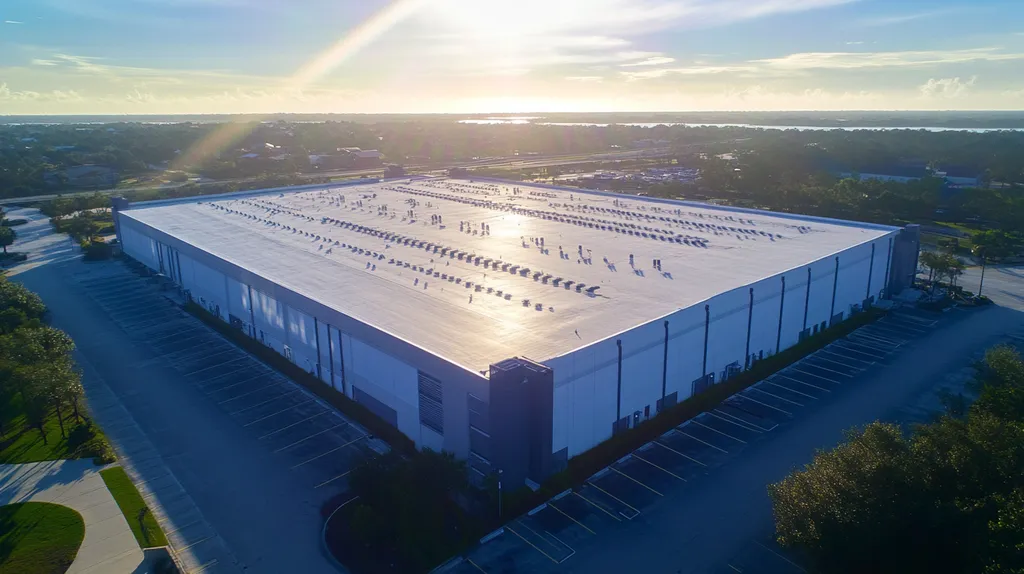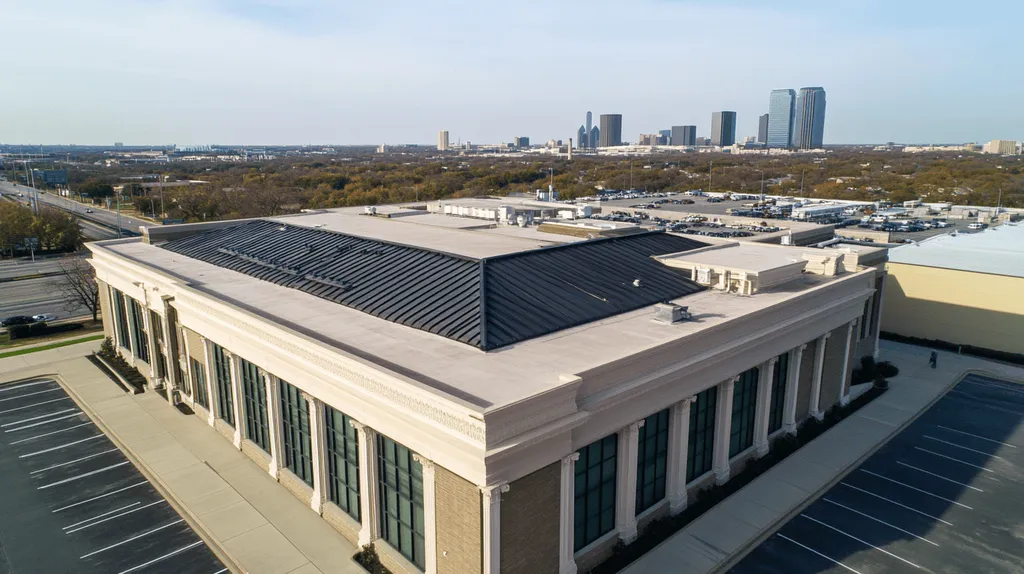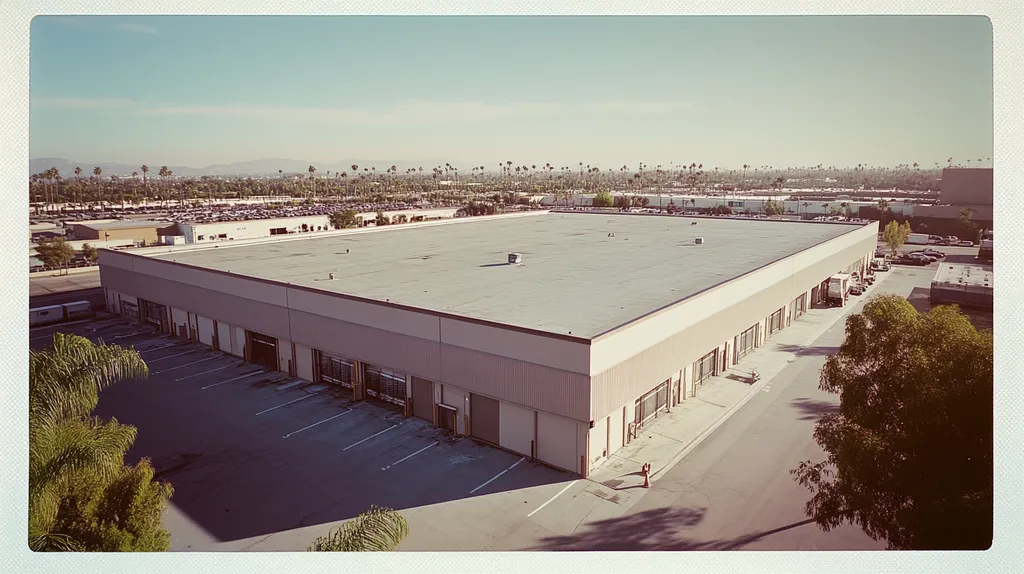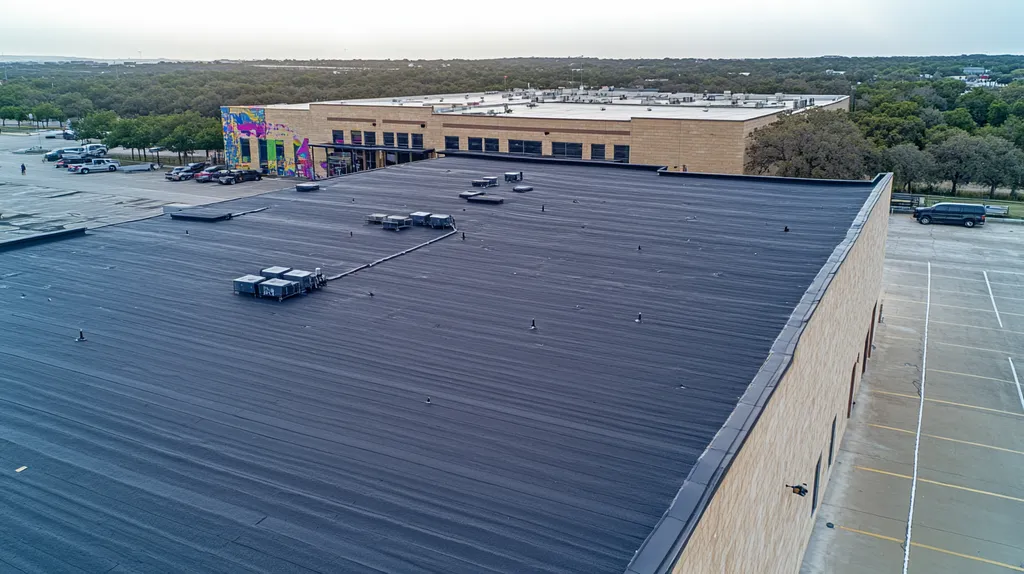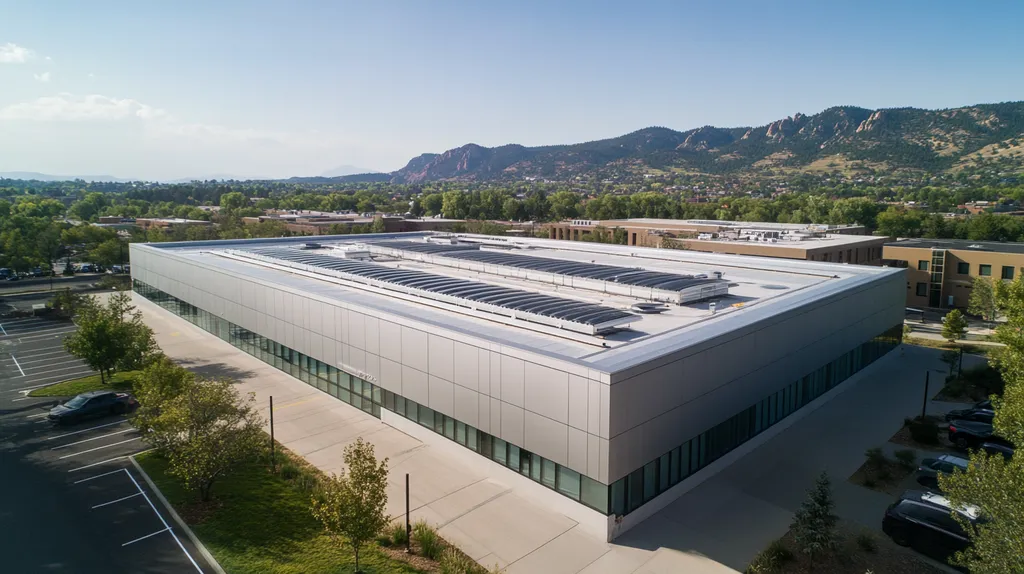Fire-related losses in commercial buildings exceeded $2.6 billion last year, with nearly 30% of structural fires involving roofing materials. Yet many facility managers overlook a critical line of defense: protective roof coatings.
These specialized coatings can dramatically reduce fire spread, enhance evacuation time, and protect valuable assets. When properly selected and applied, they serve as a vital component of comprehensive fire safety strategies.
This guide examines the essential performance factors, financial considerations, and compliance requirements facility managers must understand to effectively implement fire-resistant coating solutions. Following these evidence-based recommendations can significantly improve building safety and reduce liability risks.
SECTION 1: PERFORMANCE FACTORS
The safety of commercial properties hinges on effective fire prevention and response strategies. In the U.S., structural fires result in billions of dollars in annual losses. Utilizing roofing coatings to enhance fire safety can significantly reduce these risks while prolonging the lifespan of roofs. Understanding the fire-resistant properties, durability, and thermal performance of these coatings equips facility managers to make more informed decisions that benefit their properties and communities.
Fire-Resistant Properties of Coatings
One of the standout features of modern roofing coatings is their ability to resist fire. These specialized formulations can serve as a barrier, preventing flames from spreading. Some coatings achieve a Class A rating, indicating they meet the highest fire resistance standards.
These coatings often include additives that enhance fire performance. For instance, intumescent coatings swell when exposed to high heat, forming a char layer that insulates underlying materials and buys essential time during a fire emergency.
Opting for fire-resistant coatings may also lead to lower insurance premiums. Insurers appreciate that these enhancements mitigate fire damage risks, reflecting potential savings for facility managers. Clear labels and certifications provide guidance for informed decision-making.
In areas susceptible to wildfires, fire-resistant coatings are even more crucial. They can protect roofs from ignition by airborne embers, thus securing commercial facilities against devastating fires.
Key Action Items
Durability and Weather Resistance
Durability is a critical aspect of roofing coatings that directly impacts overall performance. Coatings designed to withstand harsh weather—such as heavy rains and extreme temperatures—maintain their protective qualities for longer, thereby minimizing maintenance and replacement costs.
Many of these advanced coatings utilize elastomeric compounds, allowing them to stretch and contract without cracking. This flexibility shields against damage during temperature swings, ultimately extending the roof’s lifespan and maintaining safety.
Some products even come with warranties that span over a decade, evidencing their reliability under diverse weather conditions. Facility managers should prioritize products that offer such assurances, reflecting both quality and performance expectations.
Additionally, weather-resistant coatings support energy efficiency by reflecting sunlight and reducing heat absorption, which can lead to lower cooling costs—a valuable financial incentive for property owners.
Key Action Items
UV Protection and Energy Efficiency
The impact of roofing coatings on energy efficiency is significant. Coatings that provide UV protection are essential for reflecting sunlight, which helps maintain cooler building temperatures—especially crucial in commercial structures where air conditioning expenses can mount quickly.
Opting for reflective coatings can also enhance a building’s Energy Star rating. Improved energy performance not only attracts tenants but positions the building attractively in today’s competitive market, blending environmental responsibility with cost savings.
Moreover, UV protection prevents the degradation of roofing materials over time. Roofs exposed to constant sunlight without adequate coatings face accelerated wear. By guarding the roofing substrate against harmful UV rays, coatings can prolong the entire roofing system’s lifespan.
Facility managers should prioritize coatings specifically designed for UV resistance, ensuring that performance is sustained for years to come. Investing in energy-efficient roofing solutions not only protects valuable infrastructure but also aligns with broader corporate sustainability initiatives.
Key Action Items
SECTION 2: FINANCIAL CONSIDERATIONS
Fire safety is not just about meeting regulations; it represents a critical financial strategy for facility managers and property owners. The financial ramifications of fire damage can easily amount to thousands, making the investment in fire-resistant coatings a wise decision. These coatings not only protect valuable assets and inventory but also prioritize employee safety. Understanding the financial advantages of these coatings is essential for sound decision-making.
Cost-Benefit Analysis of Fire-Resistant Coatings
When considering fire-resistant coatings, facility managers should evaluate initial costs against long-term savings. While these coatings may seem costly upfront, their benefits frequently outweigh the expenses. By preventing extensive damage from fire incidents, these coatings can significantly reduce repair and replacement costs.
Fire-resistant coatings also enhance the durability of roofing systems, leading to a longer lifespan. A resilient roof is less prone to damage, which translates into fewer financial burdens for facility managers.
A thorough cost-benefit analysis will help quantify these savings. This analysis should encompass both maintenance expenses over time and the anticipated lifespan of roofing materials enhanced with fire-resistant coatings. Often, these investments pay for themselves within a few years by decreasing repair costs and extending roof longevity.
Key Action Items
Insurance Premium Reductions
Incorporating fire-resistant coatings can lead to lower insurance premiums, as insurance companies recognize the diminished risk these materials pose. This is particularly valuable for facilities located in high-risk fire zones, where protecting assets is critical.
Facility managers should engage with their insurance providers to explore how fire-resistant coatings might impact their premiums. Demonstrating proactive safety measures can result in substantial discounts, providing tangible financial benefits.
In many situations, the savings from lower premiums can help offset the initial costs of applying these coatings, making them an economically favorable investment. Regularly reviewing insurance policies and adjustments in light of enhanced safety measures can further optimize overall expenditures.
Key Action Items
Long-Term Cost Savings
When looking at fire-resistant coatings, long-term cost savings are crucial. These coatings offer protection not only against fires but also against weather damage and UV degradation, which can significantly impact roofing durability over time.
By maintaining the integrity of the roof, these coatings reduce the frequency and cost of necessary repairs. For instance, a roof that endures an additional decade of service thanks to effective coatings can yield substantial savings in replacement expenses.
Furthermore, reducing the likelihood of roof failures minimizes operational disruptions, safeguarding productivity and revenue. Opting for fire-resistant coatings is therefore not just a safety measure but a strategic financial investment that enhances asset longevity and operational efficiency.
Key Action Items
SECTION 3: COMPLIANCE REQUIREMENTS
Facility managers must grasp compliance requirements to bolster fire safety through roof coatings. With fires causing significant property losses each year, following fire safety regulations is not merely a legal duty but a vital part of risk management. Ignoring compliance can result in substantial penalties and increased liability. This section delves into building code compliance, fire safety regulatory standards, and necessary certification and testing requirements to ensure coatings play a meaningful role in fire safety strategies.
Building Code Compliance
Building codes outline the regulations governing design, construction, and maintenance of structures, including roofs. Compliance with these codes is essential to ensure fire safety standards are met. Many jurisdictions have specific fire-resistance ratings for roofing materials.
Facility managers should familiarize themselves with local building codes relevant to roofing systems. These codes dictate acceptable materials and their application, making it crucial to select roofing coatings that meet or exceed these standards.
Non-compliance can lead to hefty fines and, more critically, compromise occupant safety during a fire. Regular inspections and consultations with fire safety professionals can help maintain compliance.
Key Action Items
Regulatory Standards for Fire Safety
Regulatory standards from organizations like the National Fire Protection Association (NFPA) provide critical guidelines for fire safety. These standards define how roofing coatings must perform when exposed to fire, setting minimum performance benchmarks.
For instance, roofing materials might need to pass specific tests like ASTM E84, which measures how surfaces burn. Understanding these requirements helps facility managers select products that will function effectively during emergencies.
Adhering to regulatory standards not only safeguards properties but also ensures compliance with insurance requirements. Failure to meet these standards can void insurance claims, presenting serious financial risks.
Key Action Items
Certification and Testing Requirements
Certification and testing of roofing materials are vital for validating their fire safety performance. Facility managers should prioritize products that have been tested and certified by reputable organizations like UL or FM Global, ensuring that the coatings have undergone rigorous fire-resistance evaluation.
The testing process often assesses not just fire performance but also application methods and durability over time. Selecting certified products significantly lowers fire risk and boosts facility safety.
It’s important for facility managers to keep thorough documentation of these certifications to maintain compliance. Continuous review of testing standards is also essential, as advancements in fire safety can lead to new requirements.
Key Action Items
SECTION 4: RISK MANAGEMENT
Fire incidents can severely impact commercial properties, often leading to devastating losses. With over 350,000 structure fires reported annually in the U.S., resulting in billions of dollars in damages, it is crucial to implement effective fire safety measures. Roofing coatings are pivotal in this context, as they help reduce fire spread, enhance evacuation times, and mitigate the harmful effects of smoke and heat. This section explores these essential aspects of risk management.
Reducing Fire Spread and Structural Damage
Fire-resistant coatings effectively slow the rate at which flames travel across roofing materials. When applied correctly, these coatings form a thermal barrier, decelerating the combustion process and providing vital extra time for occupants to evacuate and for first responders to arrive. Using intumescent coatings, for instance, can significantly lower flame spread ratings, thus enhancing safety.
Additionally, certain coatings are engineered to withstand extreme temperatures without breaking down. This extra layer of defense not only protects the roof’s structure but also secures the contents within the building. In environments where flammable materials are present, this added protection becomes indispensable.
By minimizing the likelihood of ignition of underlying materials, coatings can prevent extensive damage during roof fires. In commercial properties, where fire hazards are common, this proactive measure is key to safeguarding lives and property. Post-fire damage may be substantially reduced in buildings equipped with these coatings, thus facilitating quicker recovery and lowering repair costs. Consequently, investing in fire-resistant coatings is a strategic long-term decision for property owners.
Key Action Items
Enhancing Evacuation Time and Safety
During a fire emergency, every moment matters. Effective evacuation can significantly decrease the risk of injuries and save lives. Fire-resistant coatings contribute to this safety by allowing occupants extra time to leave the building before flames compromise their escape routes. Improved fire ratings of coated roofs also create a safer environment for those trying to exit.
Furthermore, these coatings decrease smoke production, leading to better visibility during a fire. Clearer paths to exits are critical in larger facilities, where confusion can escalate the danger.
In addition, incorporating fire-resistant coatings into a facility’s fire safety strategy enhances occupants’ sense of security. Knowing that the roof can withstand fire not only instills peace of mind but can also facilitate effective training during fire drills. Facilities with these safety measures may also see quicker insurance claims and potentially lower premiums due to their reduced risk profiles.
Key Action Items
Mitigating Smoke and Heat Effects
Smoke inhalation remains one of the leading causes of injury and death in fires, often resulting in more casualties than flames. Fire-resistant coatings play a vital role in reducing smoke output by slowing combustion. This reduction can greatly enhance survival rates in a building fire.
Moreover, heat effects can threaten the safety of structures. Coatings that reflect heat can significantly lower roof surface temperatures, thus minimizing the risk of internal flare-ups. In industrial settings, where high operational temperatures can be commonplace, these coatings offer critical protection.
Additionally, coatings that resist heat can prevent the degradation of roofing materials over time. Roofs designed to withstand heat and smoke not only sustain less damage but also achieve a longer lifespan, thereby reducing maintenance costs. Investing in these advanced coatings not only improves immediate fire response but also supports long-term sustainability and safety for facilities.
Key Action Items
SECTION 5: OPERATIONAL PROCEDURES
Fire safety remains a critical focus for commercial and industrial property managers, especially given that nearly 30% of building fires originate from roofing materials. Proper coating application is essential for safeguarding facilities and reducing overall risk. This section outlines vital operational procedures for surface preparation, application techniques, and ongoing inspection and maintenance, all of which enhance the effectiveness of fire-resistant coatings.
Surface Preparation for Coating Application
Effective surface preparation is fundamental to ensuring fire-resistant coatings work as intended. Thorough cleaning of the roofing surface is essential to eliminate contaminants such as dirt, grease, and leftover residues. Facility managers must inspect for structural issues and repair any deteriorating materials before coating application.
Utilizing a pressure washer or appropriate cleaning agents can greatly improve surface cleanliness. Additionally, addressing any rust, mildew, or mold is crucial to prevent future complications. Conducting a final inspection guarantees no debris remains prior to applying the coating, directly impacting performance and longevity.
Coatings adhere best to dry surfaces; moisture can lead to blistering or peeling, diminishing their fire-resistant capabilities. Therefore, an additional moisture check is recommended to confirm optimal conditions for application.
Key Action Items
Application Techniques and Best Practices
The application process is crucial for maximizing the fire resistance of roofing coatings. Facility managers must adhere to manufacturer guidelines regarding recommended thickness and environmental conditions, as improper application can reduce effectiveness.
Using professional-grade spray equipment allows for even coverage, integral for achieving optimal fire retardation. While rollers or brushes can be used, they require skilled operators to ensure consistent layers. Proper mil thickness is essential for coatings to perform effectively under fire conditions.
It’s best to apply coatings in favorable weather, preferably during mild temperatures and low humidity, to prevent premature curing and enhance adhesion. Typically, multiple thin layers are more effective than one thick coat, as they allow for adequate drying between applications.
Key Action Items
Inspection and Maintenance Protocols
Regular inspections and maintenance are essential for ensuring the sustained effectiveness of fire-resistant coatings. Facility managers are encouraged to implement a bi-annual inspection schedule to detect any wear or damage early. Neglecting these checks can compromise the coatings’ fire containment capabilities.
During inspections, managers should look for signs of peeling, bubbling, or discoloration, as these may indicate coating failure. Prompt resolution of any anomalies is necessary—this could entail patching or complete recoating if the damage is severe.
Furthermore, environmental factors can impact roofing conditions negatively. For example, debris accumulation can trap moisture against the roof surface, leading to damage and decreased fire resistance. Routine cleaning and maintenance of drainage systems are therefore critical.
Key Action Items
SECTION 5: OPERATIONAL PROCEDURES
Fire safety is a critical responsibility for commercial and industrial property managers. With nearly 30% of building fires starting from roofing materials, ensuring proper coating application is essential for protecting facilities. By establishing effective operational procedures, managers can maximize the benefits of fire-resistant coatings, enhance overall safety, and comply with safety regulations. This section highlights best practices for surface preparation, coating application, and ongoing maintenance.
Surface Preparation for Coating Application
Proper surface preparation is vital for the effectiveness of fire-resistant coatings. Thoroughly cleaning the roofing surface removes contaminants like dirt, grease, and old residues that can impede adhesion. Facility managers must also inspect for any structural damage or deterioration that needs to be addressed before applying the coating.
Using a pressure washer or appropriate cleaning solutions significantly improves surface cleanliness. It is equally important to tackle any rust, mildew, or mold to prevent future issues. A final inspection ensures that all debris is cleared away before the coating application, significantly impacting performance and durability.
Coatings adhere best to dry surfaces. If moisture is present, it may cause blistering or peeling, undermining essential fire-resistant qualities. Conducting a moisture check helps confirm that conditions are optimal for application.
Key Action Items
Application Techniques and Best Practices
Application techniques are crucial to achieving maximum fire resistance from roofing coatings. Facility managers must adhere to the manufacturer’s specifications regarding recommended thickness and environmental conditions, as improper application can compromise coating effectiveness.
Using professional-grade spray equipment is recommended for even coverage, which is essential for fire retardation. While rollers or brushes can be employed, they demand skilled operators to ensure consistent application. Maintaining proper mil thickness is crucial for the coating to fulfill its protective role under fire conditions.
Ideal weather conditions for application include mild temperatures and low humidity to prevent premature curing and ensure strong adhesion. Multiple thin coats are generally more effective than a single thick layer, allowing each layer to dry adequately before applying the next.
Key Action Items
Inspection and Maintenance Protocols
Regular inspections and maintenance are essential for ensuring the ongoing effectiveness of fire-resistant coatings. Facility managers should implement a bi-annual inspection schedule to identify wear or damage early, as neglecting these assessments can impair the coatings’ fire containment capabilities.
During inspections, managers should check for signs of peeling, bubbling, or discoloration, all indicators of potential coating failure. Timely resolution of these issues—whether by patching or complete recoating in severe cases—is necessary to maintain fire safety.
Environmental factors also affect roofing conditions. Accumulation of debris can trap moisture against the roof, leading to structural damage and diminished fire resistance. Regular cleaning and maintenance of drainage systems are critical to preventing these issues.
Key Action Items
The Bottom Line
With commercial building fire losses exceeding $2.6 billion annually, the implementation of fire-resistant roof coatings represents a critical yet often overlooked safety measure.
These specialized coatings serve as more than just protective barriers – they form an integral part of comprehensive fire safety strategies that can dramatically reduce property damage and save lives.
From enhanced evacuation times to reduced insurance premiums, the benefits of proper coating selection and application extend far beyond basic fire protection.
As building codes evolve and fire safety standards become increasingly stringent, facility managers who proactively invest in quality roof coatings position their properties for both improved safety outcomes and stronger financial performance.
The evidence is clear: fire-resistant roof coatings are no longer optional – they are essential risk management tools for modern commercial properties.
FREQUENTLY ASKED QUESTIONS
Q. What are the fire-resistant properties of coatings for a commercial roof?
A. Modern roofing coatings are designed to resist fire and slow flames’ spread. Many achieve a Class A rating, meaning they meet the highest fire resistance standards. These coatings may include intumescent additives that swell when exposed to heat, adding an extra layer of safety during fire emergencies.
Q. How do fire-resistant coatings for an industrial roof offer financial advantages?
A. Although fire-resistant coatings may appear costly at first, they can yield significant long-term savings. By preventing fire damage, these coatings reduce repair and replacement costs. Additionally, a more durable roof can lead to fewer maintenance expenses, ultimately resulting in a sound investment that can pay for itself over time.
Q. What compliance requirements must facility managers consider for commercial roofs?
A. Facility managers must familiarize themselves with local building codes and fire safety regulations to ensure compliance. Specific fire-resistance ratings are often required, and neglecting these rules can lead to fines and increased liability. Regular inspections and consultations with fire safety professionals can help maintain adherence to these critical requirements.
Q. How do fire-resistant coatings help with risk management for commercial roofs?
A. Fire-resistant coatings slow the spread of flames, providing crucial time for evacuation. Coatings that withstand high temperatures also protect roofing material, reducing structural damage. By minimizing risks during a fire incident, these coatings can significantly lower the likelihood of devastating losses, enhancing overall safety and risk management strategies.
Q. What operational procedures enhance fire-resistant coatings’ effectiveness on roofs?
A. Proper surface preparation, including thorough cleaning and inspection, is crucial before applying coatings. Follow the manufacturer’s guidelines for application techniques, ensuring correct thickness and environmental conditions. Regular inspections and maintenance, including debris removal, are essential for the longevity and effectiveness of fire-resistant coatings on roofs.
Q. How do UV protection features in coatings benefit a commercial roof?
A. Coatings that offer UV protection help maintain cooler building temperatures by reflecting sunlight. This not only reduces cooling costs but also prevents the degradation of roofing materials caused by prolonged sun exposure. By investing in UV-resistant coatings, facility managers can prolong the lifespan of their commercial roofs and improve energy efficiency.
Q. What benefits do insurance companies see in fire-resistant coatings for industrial roofs?
A. Insurance companies recognize that fire-resistant coatings significantly reduce fire damage risks, often leading to lower premiums. When property managers demonstrate proactive safety measures, insurers may offer substantial discounts, making these coatings an economically favorable investment. Regular reviews and documentation of coating applications can further optimize insurance benefits.

